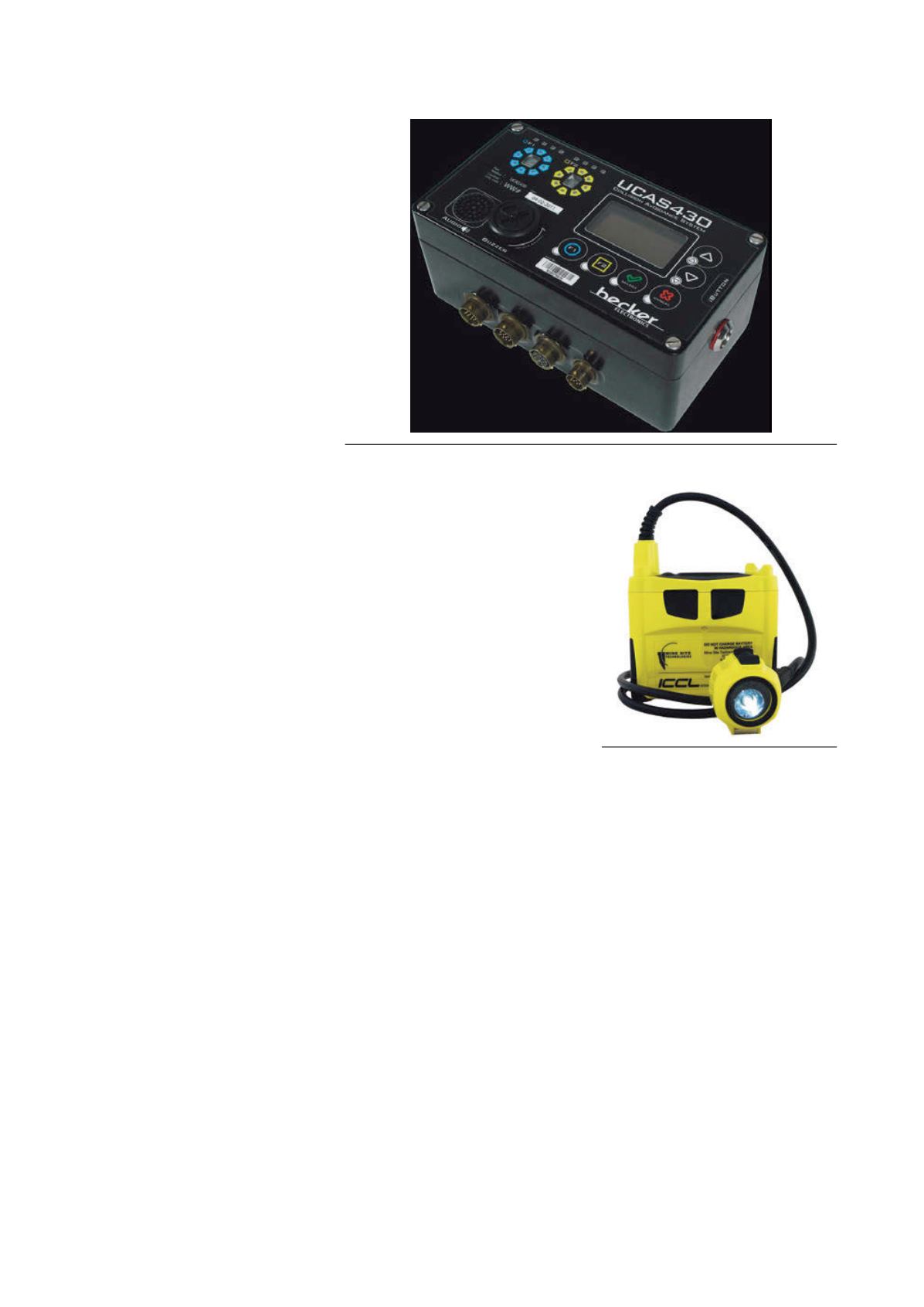
systems on electrically driven mobile
plant (rather than diesel) has resulted in
spurious alarms due to interaction of
electromagnetic fields, DuCarme said:
“All continuous miners in the US are
electrically powered and of the 700 or so
in operation over 400 are equipped with
electromagnetic proximity detection.
Within the limitations of our study, our
tests showed the systems performed
successfully concerning repeatability
and accuracy as far as providing
warning and stop zones.”
What of the end proof that systems
are working in terms of improved
safety? Has there been a saving of life?
DuCarme said: “We do not currently
have the information to evaluate the
improvement in safety. Future injury
and fatality statistics could be used to
access the impact of proximity detection
systems. In addition, data from the
machines indicating when the vehicle
was stopped due to the proximity
detection system could help determine
the impact of the systems.”
MSHAhas so far approved four
systems for use in underground coal
mines:
1.
Strata Worldwide's HazardAvert
system, based on Frederick Mining
Controls and NIOSH developed
hardware and software.
2.
Nautilus International’s Coal-Buddy
system.
3.
Matrix Design Group’s M3-1000.
4.
Matrix Design Group's IntelliZone
Proximity Monitoring systems.
(Both 3 and 4 are being used by
Joy Global as SmartZone Gen 1 and
Gen 2 respectively.)
Strata Worldwide offers the
HazardAvert system and in 2012 also
introduced a ‘Proximity Ready’ cable
and mount kit. David Jenks explained:
“The remaining components of the
system can be installed onsite,
underground or in a workshop. The
purpose of the kit is to spread the
expense and ease the installation of a
complete system underground. It is not
necessary to bring the machinery to the
surface to complete the installation.”
HazardAvert establishes a magnetic
marker zone around the mobile plant
using ‘generators’. The zones can be
adjusted to encompass the entire
machine and its turning radius, or be
split into specific areas according to the
means of plant operation. Miners and
others in the operational area wear
personal alarm devices (PADs) that
detect and measure these magnetic
marker zones to determine proximity to
the machine. If the PAD wearer enters
the designated warning or danger zones,
the PAD emits audible and visual alerts.
To date, Strata has sold over 1200
HazardAvert to approximately 100
different operations in six different
countries. These figures are for all types
of application, including underground
coal mines.
Jenks prefers zones to be set up
according to customer requirements and
left the same (without operator changes).
“We found this to be preferred because it
is easier for the workers to understand
the zones and where they are, so they
can make adjustments to their work
behaviours and operate more safely,”
Jenks said. “Zones are consistent across
all machinery types in the mine.”
Around two years before the final
MSHApublic consultation, forward
thinking, safety-aware mine operators
were already taking steps to install
protective systems. Between October
2013 and February 2014, United Coal Co.
fitted the Strata Worldwide HazardAvert
system to mobile equipment at its
Affinity mine, a 1.4 million short t
metallurgical coal complex. United
opted for proximity detection rather
than cameras to increase plant operator
awareness and miner safety due to
mainly visibility issues with cameras. A
total of 16 shuttle cars, three scoops and
eight continuous miners were in the
initial programme.
The Becker Mining group produces
its collision awareness systems (CAS)
through group companies in
South Africa andAustralia. In Australia,
the underground range is an OEM
product, and there Becker works with
ICAS Australia. This enables Becker to
offer a range of technologies,
determining the best suited to the
mining application.
Becker’s multi-technology CAS
facilitate three-way alerts, namely:
person-to-vehicle (to warn pedestrians
of nearby mobile plant),
The control unit of Becker Mining’s UCAS430 control unit for collision avoidance.
Mine Site Technologies’ Integrated
Communications Cap Lamp incorporates
a personal alert device.
March 2016
|
World Coal
|
43


